Garmin inReach Mini 2 vs. Spot X: Which satellite messenger is best for you?
Content is created by CNN Underscored’s team of editors who work independently from the CNN newsroom. When you buy through links on our site, CNN and its syndication partners may earn a commission. Learn more
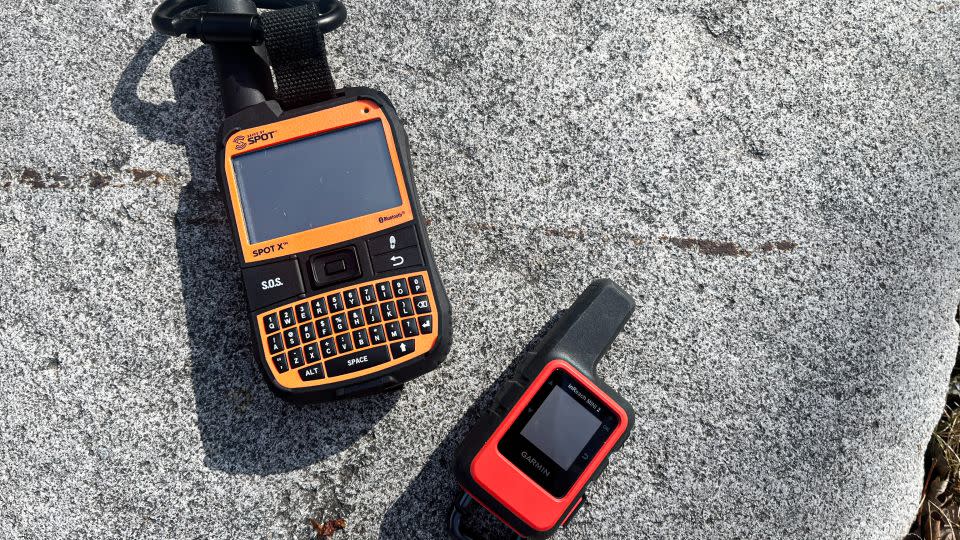
Regardless of whether the snow is flying or the sun is shining, it’s always a good day to be outside. But accidents happen in the great outdoors, so preparation is key. If things go sideways while backpacking or hiking, you may need to call for help — in places where your phone doesn’t work. That’s where the best satellite messengers, such as the Garmin inReach Mini 2 or Spot X, come into play.
Satellite messengers are small devices that allow us to send and (usually) receive messages in places where there isn’t cell service. They rely on satellites instead of cell towers, so you can typically get a message out from anywhere on the planet, as long as there is a decent line of sight to the sky. They don’t have other features, so your satellite messenger is typically used for occasional check-ins with loved ones or during crisis communications. That’s why it’s imperative that you trust your device to work when you need it to.
The Garmin inReach Mini 2 and Spot X are two of the most popular satellite messengers on the market today. However, they are very different devices. We spent six months testing each satellite messenger to compare them in this head-to-head test. While both are quality devices with various strengths and weaknesses, one satellite messenger came out on top of our test. Here’s what we learned.
Garmin inReach Mini 2 vs. Spot X at a glance
Garmin inReach Mini 2

Smaller than the palm of your hand, the inReach Mini 2 is the tiniest satellite messenger on the market and seamlessly integrates with your phone or other Garmin watches. It also has the better tracking of these two messengers.
Spot X
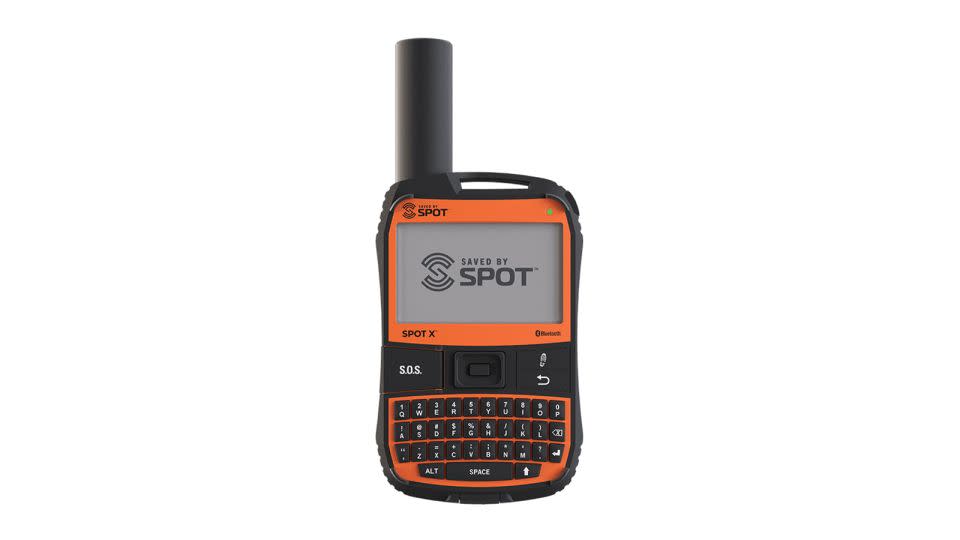
The Spot X works as a stand-alone device thanks to a generous keyboard, but it can be synced with your phone via Bluetooth. This makes it a great choice for outdoors lovers who resist technology — and it’s by far the more affordable of these two options.
Quick comparison
Size and weight
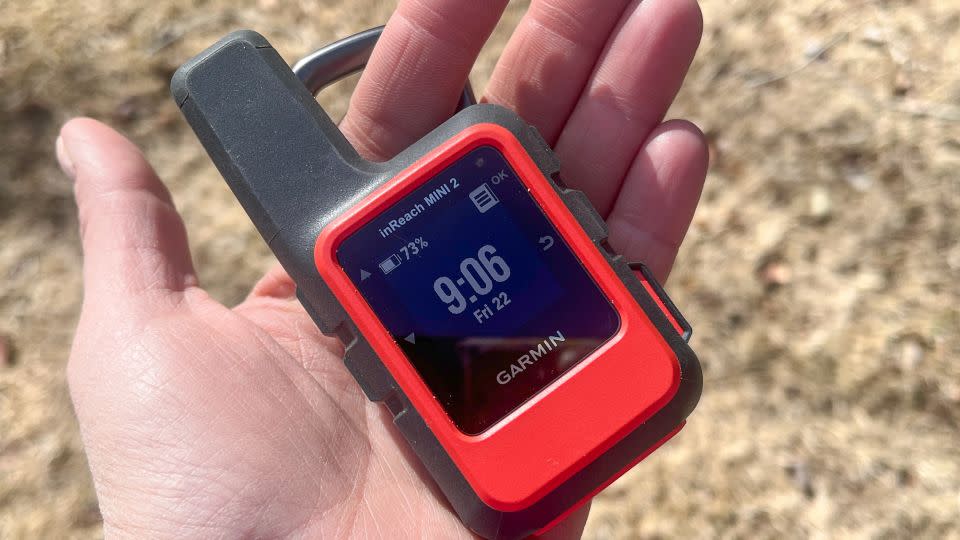
Comparing the size and weight of the Garmin inReach Mini 2 and Spot X is like comparing apples to oranges — they aren’t even close.
The Garmin inReach Mini 2 is the smallest and lightest satellite messenger on the market because there is no keyboard. It weighs less than 4 ounces (which is the weight of a standard bar of chocolate) and is smaller than the palm of your hand. This makes it a no-brainer when packing for a trip. You can easily stash it in the lid of your backpack or in the pocket of your ski pants, or clip it onto a shoulder strap with the included carabiner. While hiking near Colorado’s Independence Pass, I secured the inReach Mini to my daypack and I never struggled with it swinging or banging around — it’s that small.
The Spot X is much bigger since it comes with a keyboard. End to end, it’s about the same size as my entire hand, including my fingers. It also weighs more than half a pound; 7 ounces is about the same weight as a cup of sugar. While it is still considered lightweight by any real measure of the phrase, it definitely takes up more space in a backpack. It still easily fits inside of a pack lid, but it’s much bulkier to attach to your shoulder straps. The Spot X also comes with a carabiner, and I tried attaching it to my backpack, but the heft became cumbersome.
Ease of use as a stand-alone device
Of course, size and weight are relative since they both tie back to functionality. The Garmin inReach Mini 2 is much smaller and lighter because it does not come with a keyboard. Similar to an iPhone, all your information is on the tiny 0.9-by-0.9-inch screen. There are two buttons on the left side of the device to navigate the screen up and down, and three buttons on the right side: one for Enter, one back button and the larger SOS/emergency button.
In terms of functionality, this does mean the inReach is a bit funky to use on the device itself. When sending a message, you can select from preset messages you’ve created at home, or take the time to tediously type out a brief message using the digital screen (which pretty much no one is ever going to want to do).

As a stand-alone device with no other integration, the Spot X is superior. It’s larger thanks to its generously sized QWERTY keyboard that makes typing messages a lot easier than on the Garmin. However, it’s not perfect. Each keyboard button is flat on the top and pretty small, so it’s surprisingly difficult to hit the correct letter, and impossible to do so while wearing gloves. I found it the easiest in testing when I had longer nails and could use those to hit the proper key. It’s still doable with the pads of your fingers, but be prepared to make a few typos.
Still, the Spot X makes for a great device if you want to send occasional check-in messages to loved ones back home. You don’t have to use a separate phone to do so, and it’s easy enough to whip it out and send off a brief “Made it to camp!” note to your partner.
Device integration for two-way messaging
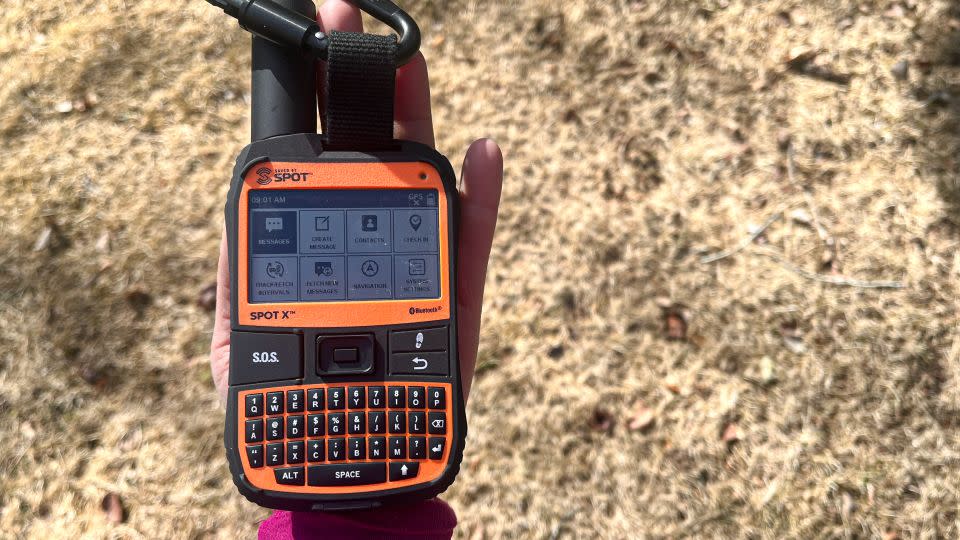
This is where Garmin shines. When using the inReach Mini 2, users should download the free Garmin Messenger app to their phone (it’s compatible with both iPhone and Android). This app is incredibly easy to use and removes any semblance of frustration from the messaging process. Once you set up your account and grant permissions, you can sync the app with your contacts so anyone you know with a Garmin Messenger account will automatically load.
Once you’ve done that, sending a message is as easy as sending a text from your phone. The two-way conversation shows up via text bubbles, just like it does in daily text threads. Of course, this isn’t without a caveat. If your phone dies, you can’t use the app, and the inReach is small enough that you won’t want to type extensive messages on the device.
Additionally, the inReach Mini syncs with one of the many Garmin watches that have the inReach Remote Widget. While this device integration isn’t a deal breaker, it is a nicety, considering many outdoor enthusiasts already own a Garmin watch. The watch and the device need to be pretty close together (roughly 10 feet) to work, but it means you can leave the satellite messenger tucked inside your backpack and send a check-in or SOS message from your watch while trekking. I received a few messages from my sister while hiking, and it was nice to glance at them on my watch screen rather than rummage through my backpack for the inReach Mini 2.
The Spot X uses an app called Spot X that is easy to download and set up on your device. It holds up to 70 contacts and works similarly to the Garmin Messenger app. However, the device connects with this app via Bluetooth, so there is no smartphone connectivity. This means the app doesn’t share contacts and you’ll have to upload those that you want to reach with your Spot X. And a few times, my phone struggled to find my messenger. On one occasion, it never did find my Spot X and I gave up.
Tracking tests

While all of the previous factors fall under the “good to know” category, tracking and finding satellite signals is the crux of a satellite messenger. After all, if your device won’t lock on to a satellite or send a message, there’s no point in carrying one.
During my testing, I sent side-by-side messages from both devices in four different locations: inside my house, the high alpine with plenty of open sky, a dense coniferous forest and a broad canyon where cell service drops. To be fair, I knew that some of these locations were asking a lot. Satellite messengers require a clear line of sight to the sky, so thick forests, canyons and houses are tricky locations because the view is blocked.
During these tests, the Garmin device was able to immediately get a message out in three of the locations. I was pleasantly surprised to see it immediately fire off a message from our house; I hadn’t expected it to work. It struggled in the thick forest but was finally able to shoot out a note once I moved the device 2 feet and positioned it beneath a small crack in the tree canopy. It also had zero issues in the high alpine and from within the canyon.
The Spot X struggled a bit and was only able to send a clear message in one of the locations: the high alpine. I was never able to get it to send a message from my house or from inside the canyon. In the forest, I had to move it all the way to the perimeter of the canopy where at least 60% of the sky was uncovered. Once I did that, it finally sent.
Obviously, the success of sending these messages depends on many variables, so there could definitely be instances where the Spot X would successfully send a message when the Garmin couldn’t. However, when you compare the satellite networks each device uses, Garmin is the clear winner. The inReach Mini 2 is backed by the Iridium global satellite network, which has a constellation of 66 satellites versus Globalstar’s 24, the system the Spot X uses. The Iridium network allows Garmin to have global coverage, while Globalstar lacks coverage in parts of Asia and Africa.
Price
Each satellite beacon requires a monthly subscription that enables the device to perform two-way messaging, tracking and all of the other functions you’ll want to use. This subscription comes at an additional cost; buying the device isn’t enough.
The Spot X offers two different subscription plans: one with an annual contract and one without. Within each plan, there are three tiers of service that increase in price and offerings. The basic plan with a 12-month contract costs $12 per month and comes with unlimited SOS messaging, 20 custom messages, unlimited check-in messages and tracking intervals at 10-, 30- and 60-minute intervals. Movement alert is not included and there is a $30 activation fee. For the same basic plan without an annual contract (called the Flex Basic), the cost is $15. There is still a $30 activation fee, but Spot also charges an additional $35 flex charge fee due at activation and then recurring annually — even if the device is suspended at that time.
If you need more messaging or increased tracking, the higher-end plans are available, ranging in cost from $20 to $40 per month.
The Garmin inReach Mini 2 has subscriptions that operate similarly: one plan with an annual contract and one without. Like the Spot X, the Consumer Safety plan (the basic tier) with an annual contract costs $12 per month, but it only includes unlimited SOS messaging, 10 text messages, unlimited check-in messages and tracking intervals starting at 10 minutes. If you want to send or track points or handle location requests, that will cost 10 cents each. There is also a $30 activation fee. If you opt for the Consumer Safety plan with no annual contract, it costs $15 per month and includes a $35 annual program fee in place of the activation fee.
The Garmin device offers two other subscription plans for recreational users (and a handful more for professional users, like guides). As with the Spot X, these offer more messages, lower tracking intervals and included location requests/sent track points. These plans are available from $25 to $65 per month.
Bottom line
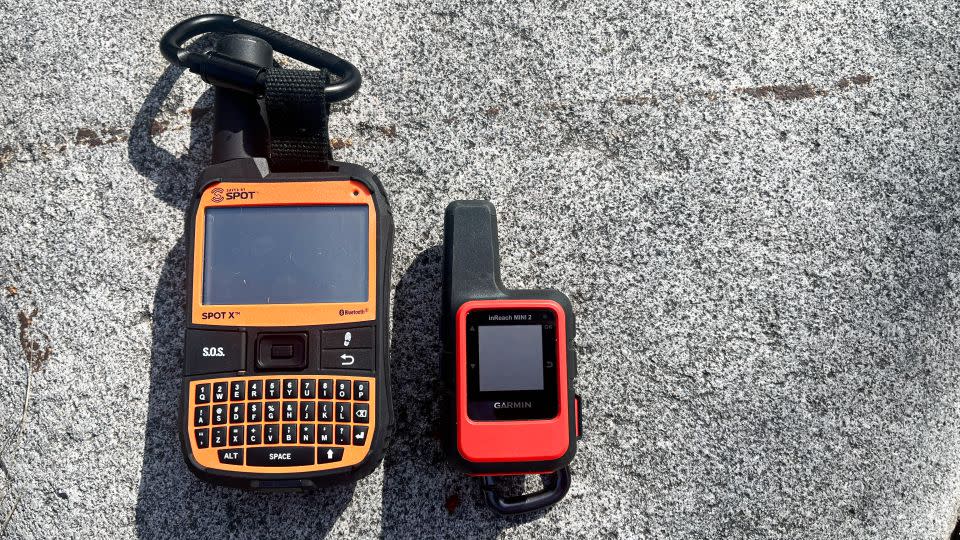
Both satellite messengers are great devices and serve a purpose for a particular audience. If you’re on a tighter budget or you don’t want to drag your cell phone into the backcountry, the Spot X may be the better option for you. If you don’t mind spending the extra cash for an ultralight device with more reliable tracking, the Garmin inReach Mini 2 is the better bet.
The Garmin inReach Mini 2 is a lot pricier, but I found it to be more trustworthy, and I had a better experience with the app. If money isn’t a factor, I would go with the Garmin.
Note: The prices above reflect the retailers' listed price at the time of publication.
For more CNN news and newsletters create an account at CNN.com

